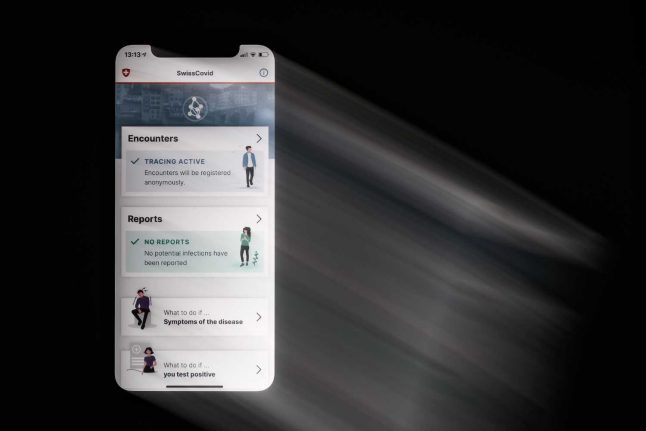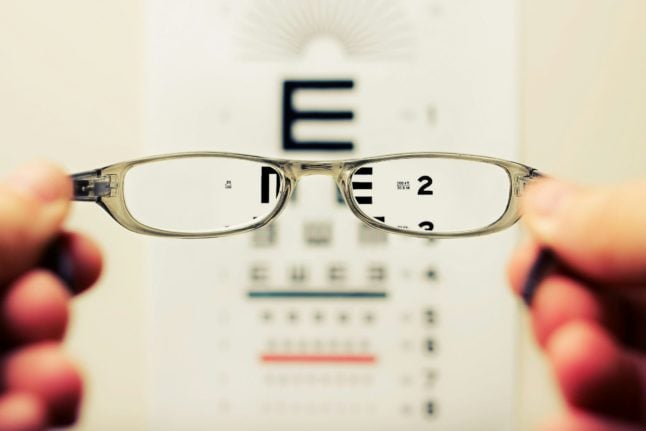According to government data released at 3pm, Switzerland's coronavirus tracing app was launched at midnight – meaning it was downloaded at a rate of 10,000 per hour so far.
15 minutes
The app registers when an individual comes into contact with other individuals through a person’s smartphone location systems and bluetooth.
READ: Swiss scientists launch a new app to collect Covid-19 data
Contact is traced when one person with the app is less than two metres from another person with the app for more than 15 minutes in a 24-hour period.
Such contacts are recorded anonymously on both devices.
If one of those users tests positive for the coronavirus, the person will receive a 'covid code' from the cantonal authorities.
READ: Q&A: How will Switzerland's coronavirus tracing app work
Zero: Null, zéro, zero
How much a coronavirus test will cost if you receive a warning application via the app, after the government pledged to cover the CHF95 cost of each test.
The app itself is also free.
20 percent
Approximately 20 percent – or one in five – of smartphone users cannot use the app because their phones are too old.
Sang-Il Kim, the Head of Dept. Digital Transformation at the BAG, said that this was a rate much higher than in other countries, with Switzerland’s efforts benefitting from the country’s love of new devices.
“We are fortunate that only 20 percent of users are technically excluded from the app. In other countries, up to 50 percent of them have smartphones that are too old.”
Users of iPhone 6 and older models cannot use the app.
20 percent (again)
The government is hopeful that around one in five Swiss will download the app. This is much lower than the 60 percent rate which Oxford University said was necessary to ensure the app functioned effectively in society.
Kim said on Thursday that 20 percent was an optimistic goal.
“I would be happy if 20 percent of the smartphones would use the app,” Kim said.
15 to 20 percent
At the launch of the app on Thursday, the Swiss government said around 15 to 20 percent of current covid cases in Switzerland are imported.
While the app functions all across Switzerland, it will not work abroad. Switzerland is trying to work with the EU to develop solutions.
1
The Swiss R-Rate, or reproductions rate, rose above 1 on June 17th. On June 25th, the government said the rate was still stubbornly stuck above 1.
The basic reproduction number is one way of analysing a disease's ability to spread. It represents the average number of people that a person with coronavirus will pass the virus onto. An R0 (R naught or R zero) of 1 means that each person infected with the virus is passing it on to one other person.



 Please whitelist us to continue reading.
Please whitelist us to continue reading.
Member comments